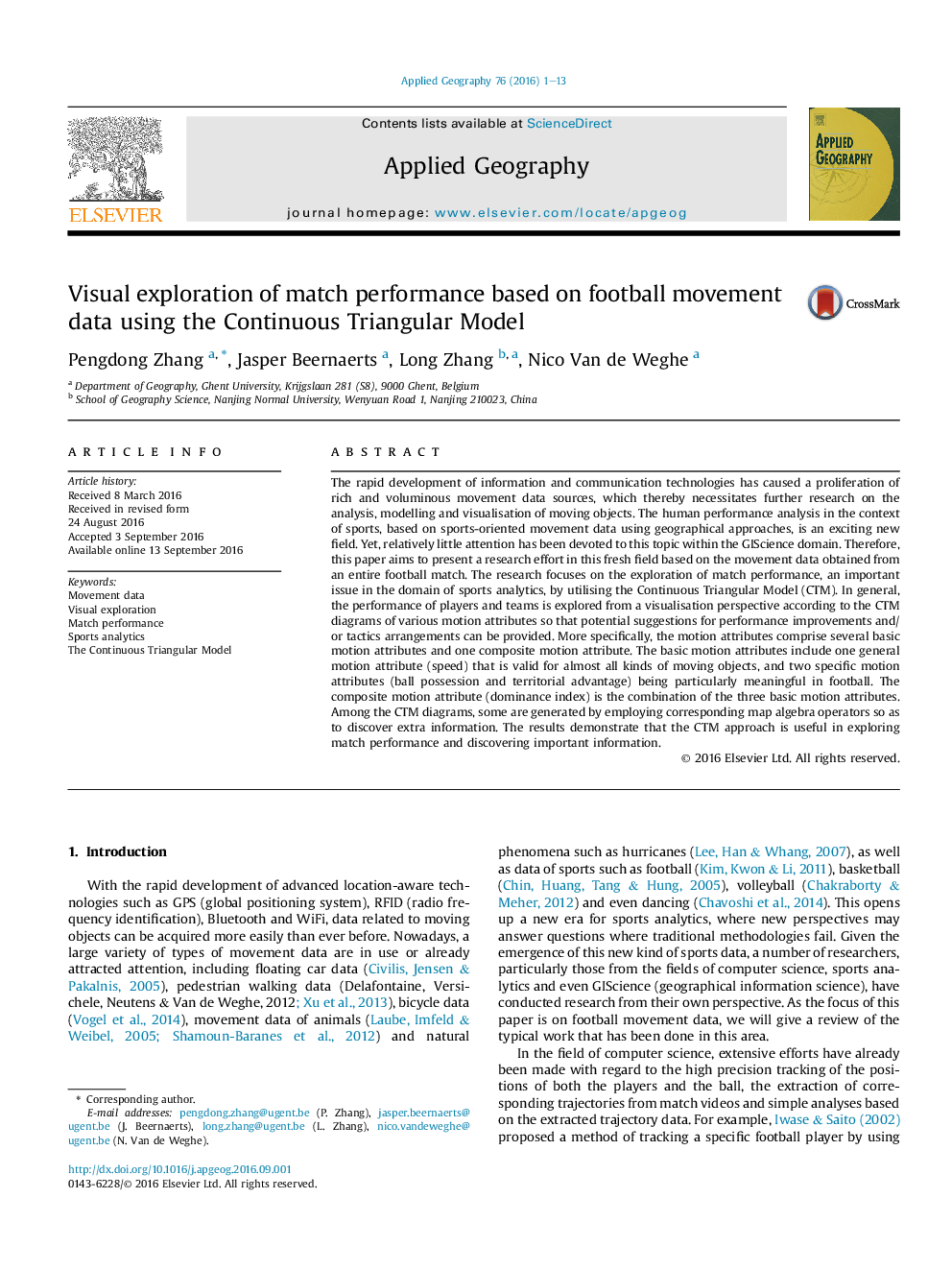| Article ID | Journal | Published Year | Pages | File Type |
|---|---|---|---|---|
| 6458529 | Applied Geography | 2016 | 13 Pages |
â¢Football match performance is explored based on the tracked movement data.â¢The Continuous Triangular Model (CTM) is used to as a visualisation tool.â¢The performance is explored based on various motion attributes.â¢Multiple operators are applied to the CTM to investigate the motion attributes.â¢Results demonstrate that important information can be discovered using the CTM.
The rapid development of information and communication technologies has caused a proliferation of rich and voluminous movement data sources, which thereby necessitates further research on the analysis, modelling and visualisation of moving objects. The human performance analysis in the context of sports, based on sports-oriented movement data using geographical approaches, is an exciting new field. Yet, relatively little attention has been devoted to this topic within the GIScience domain. Therefore, this paper aims to present a research effort in this fresh field based on the movement data obtained from an entire football match. The research focuses on the exploration of match performance, an important issue in the domain of sports analytics, by utilising the Continuous Triangular Model (CTM). In general, the performance of players and teams is explored from a visualisation perspective according to the CTM diagrams of various motion attributes so that potential suggestions for performance improvements and/or tactics arrangements can be provided. More specifically, the motion attributes comprise several basic motion attributes and one composite motion attribute. The basic motion attributes include one general motion attribute (speed) that is valid for almost all kinds of moving objects, and two specific motion attributes (ball possession and territorial advantage) being particularly meaningful in football. The composite motion attribute (dominance index) is the combination of the three basic motion attributes. Among the CTM diagrams, some are generated by employing corresponding map algebra operators so as to discover extra information. The results demonstrate that the CTM approach is useful in exploring match performance and discovering important information.
